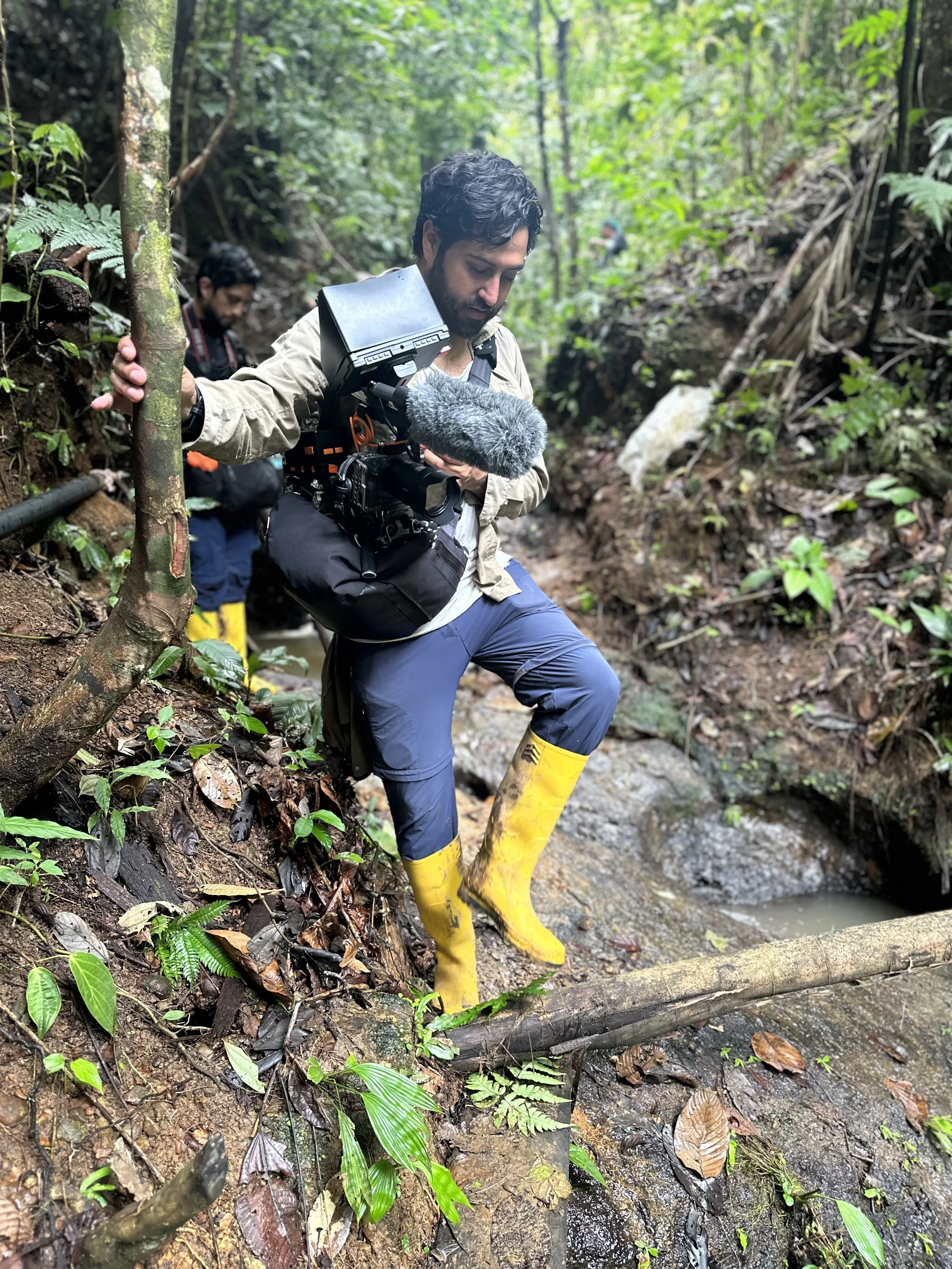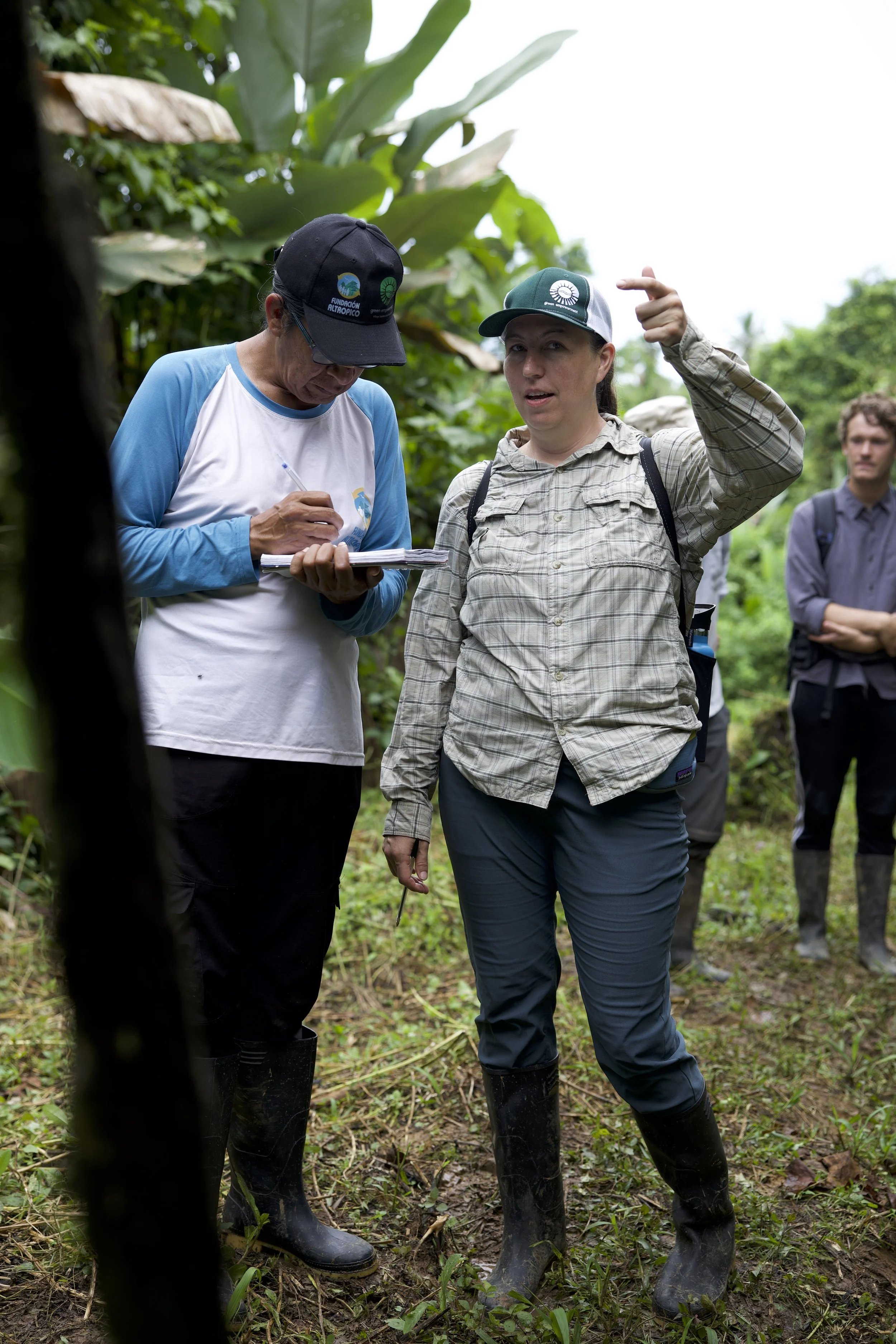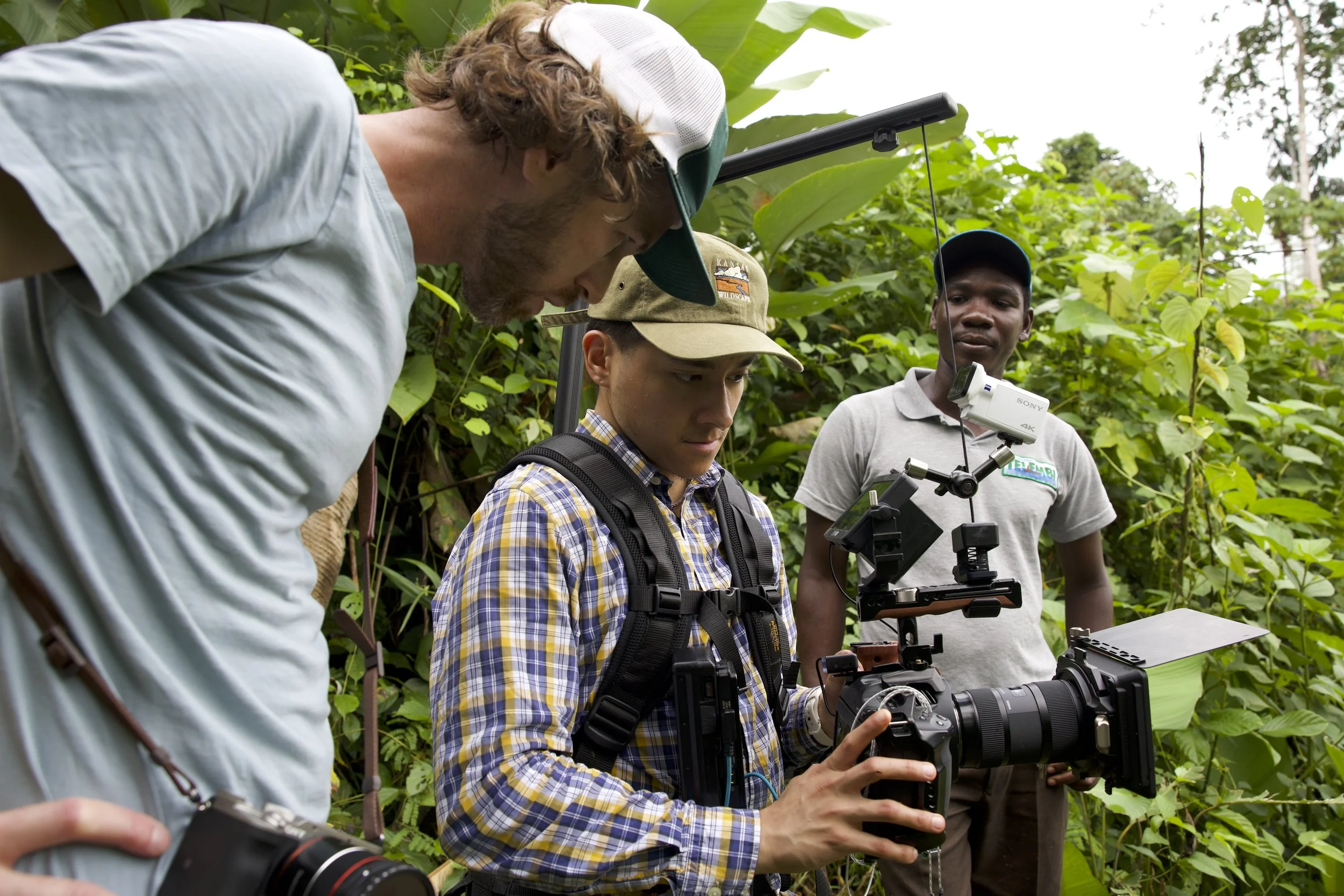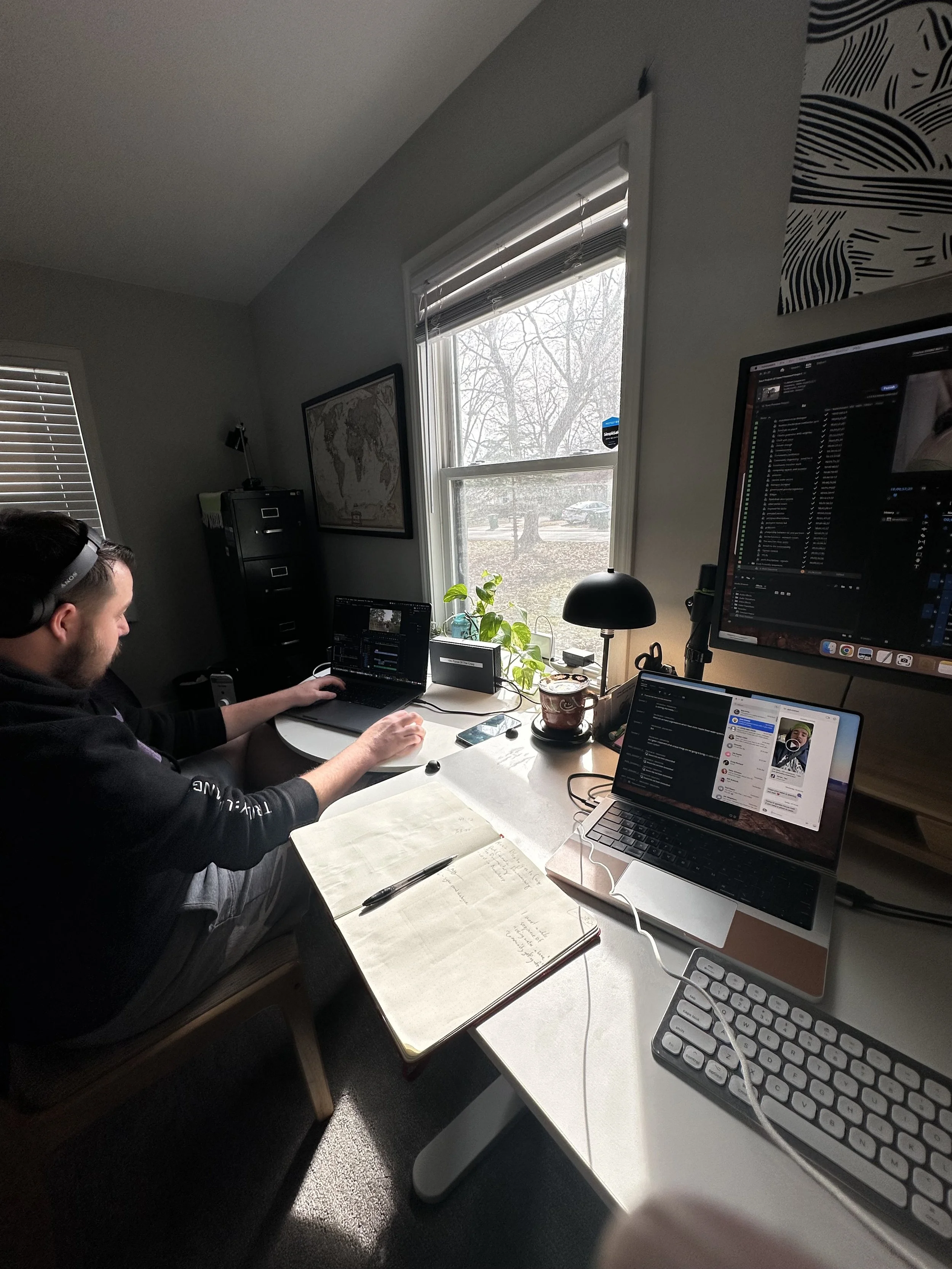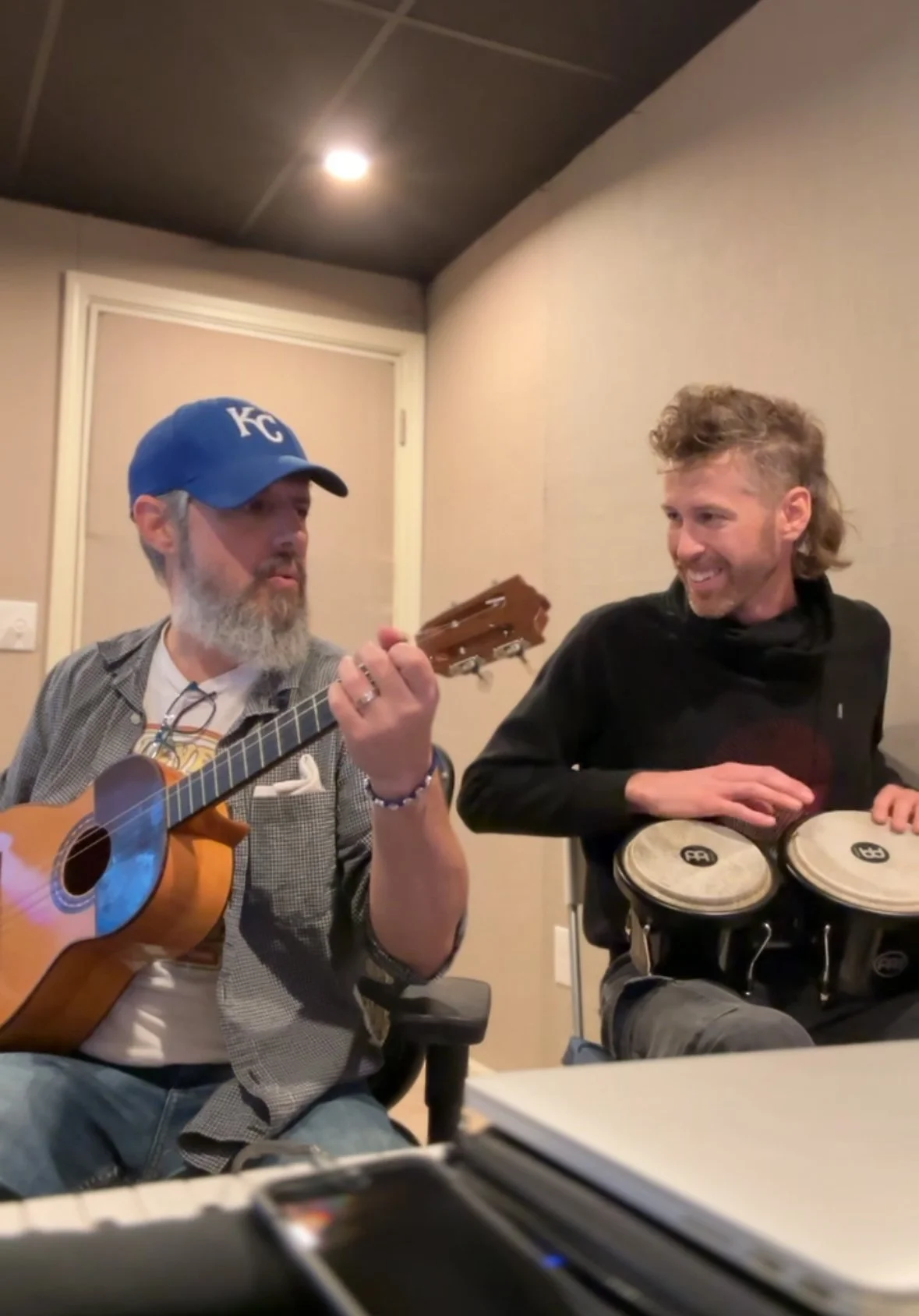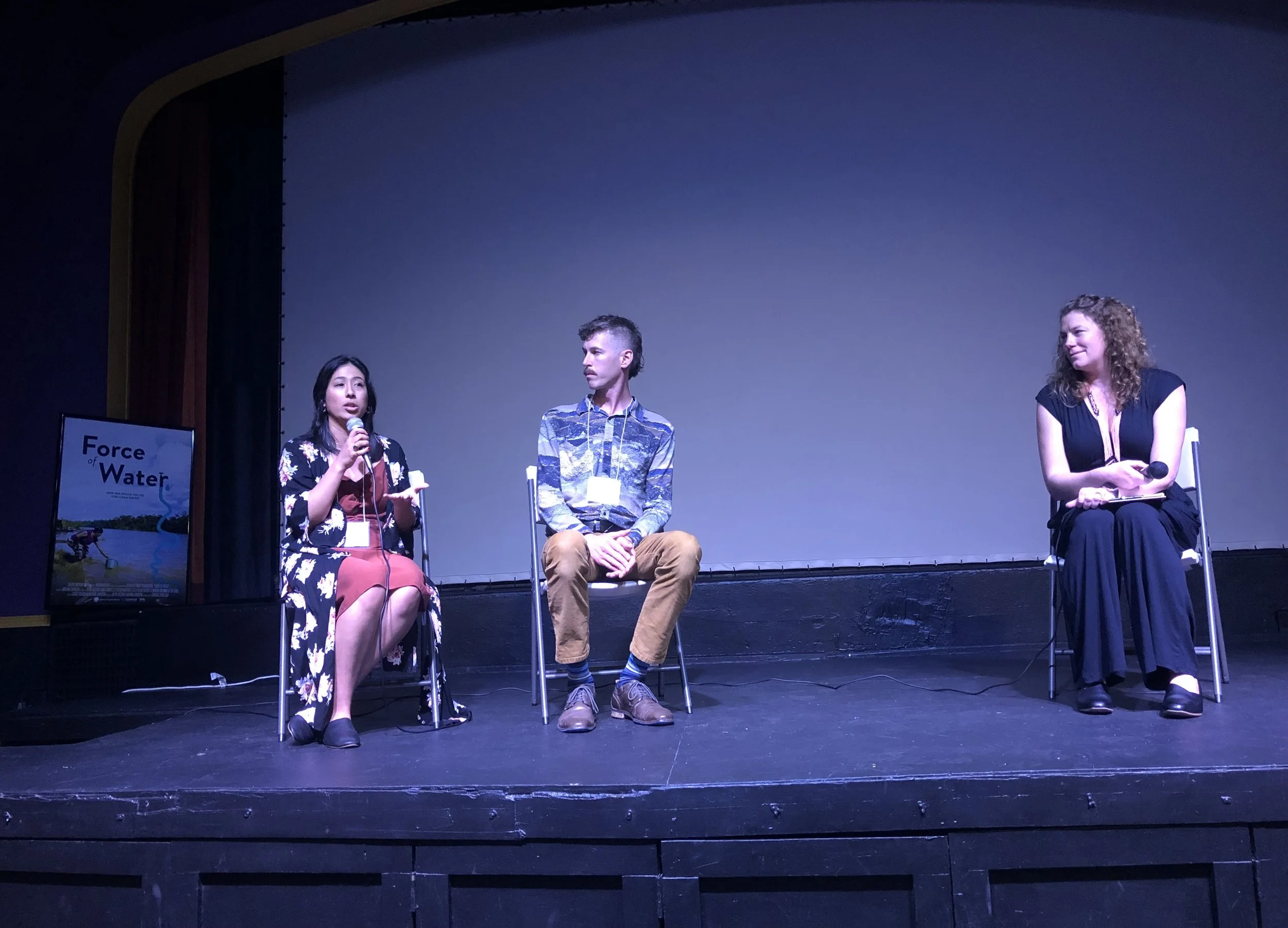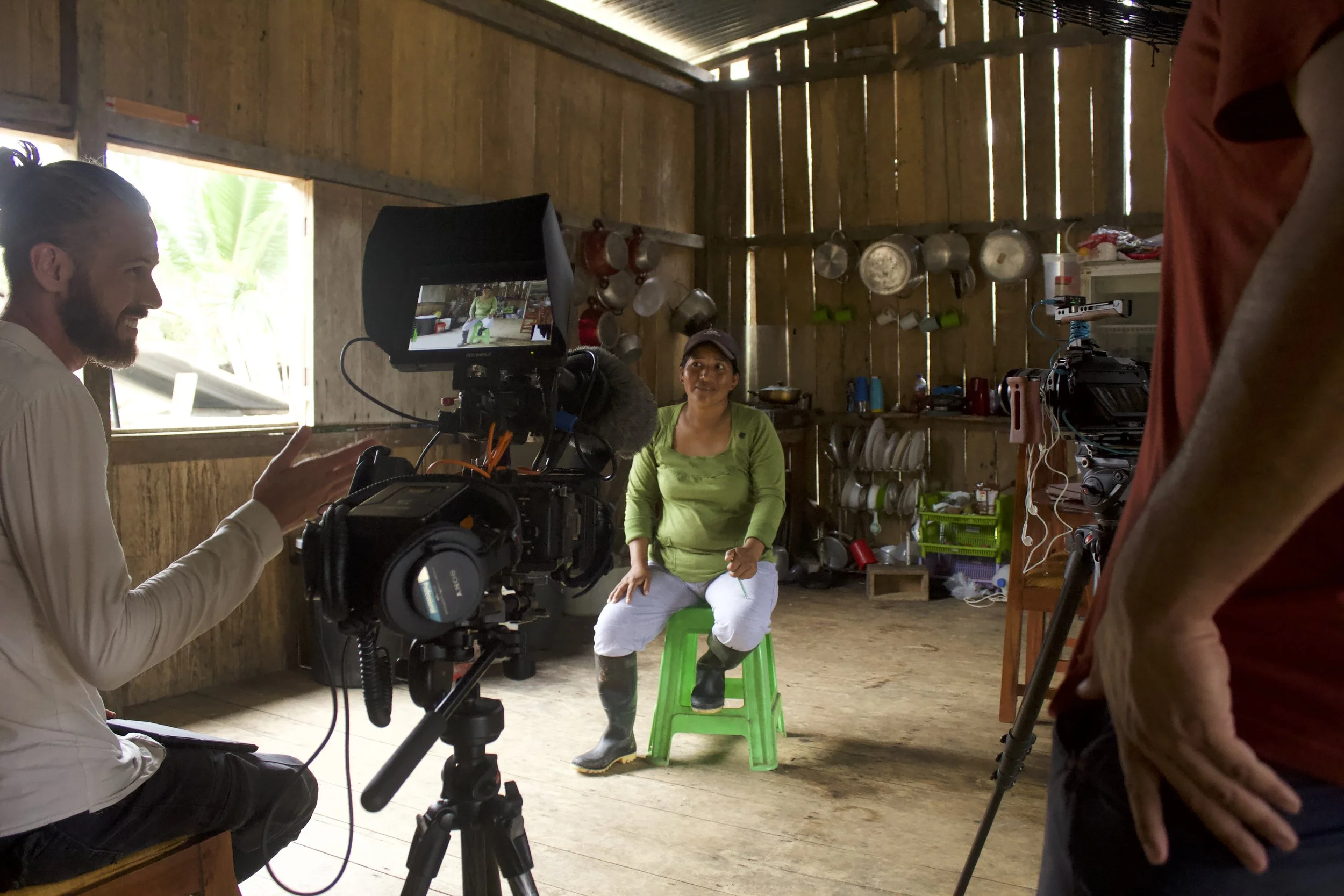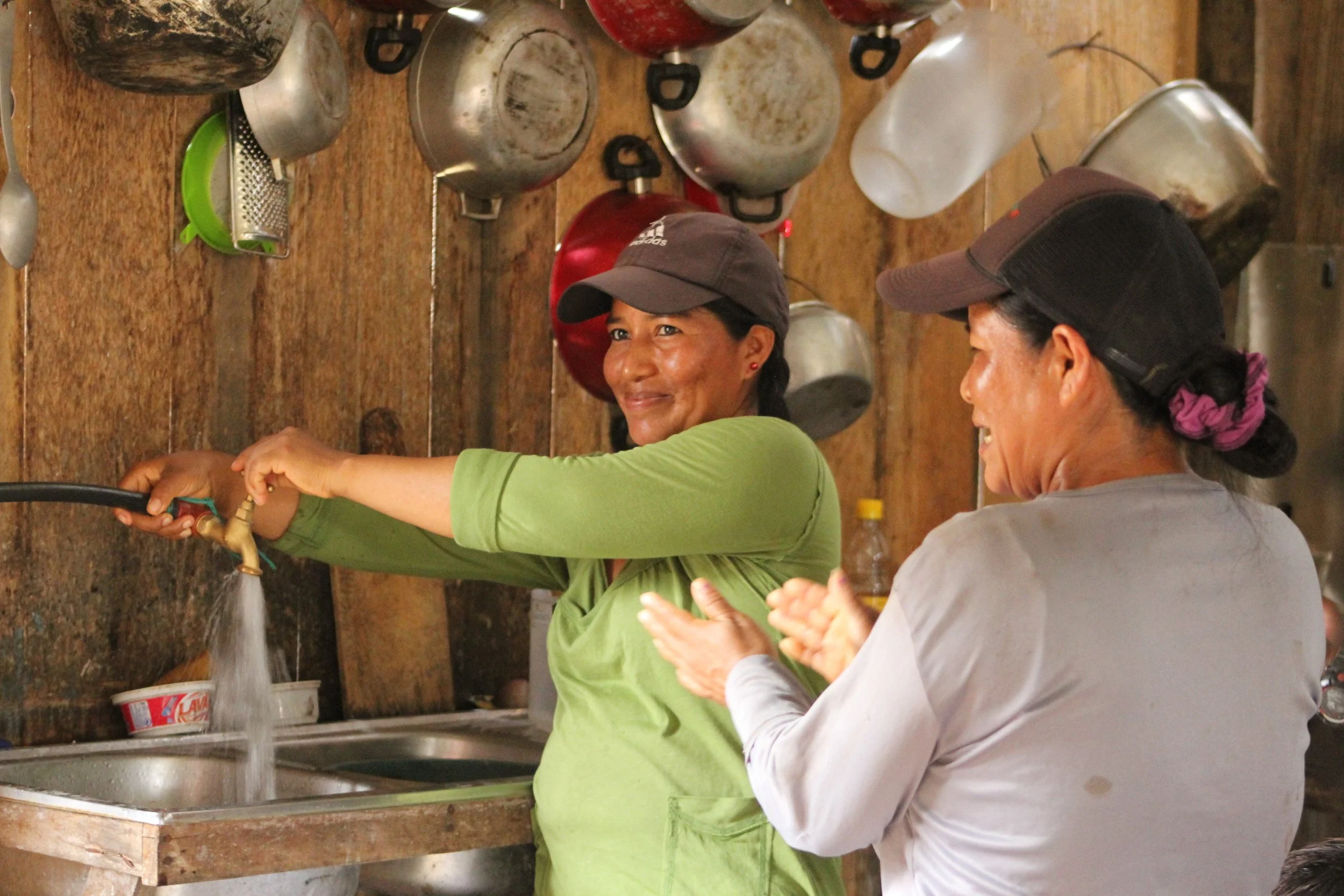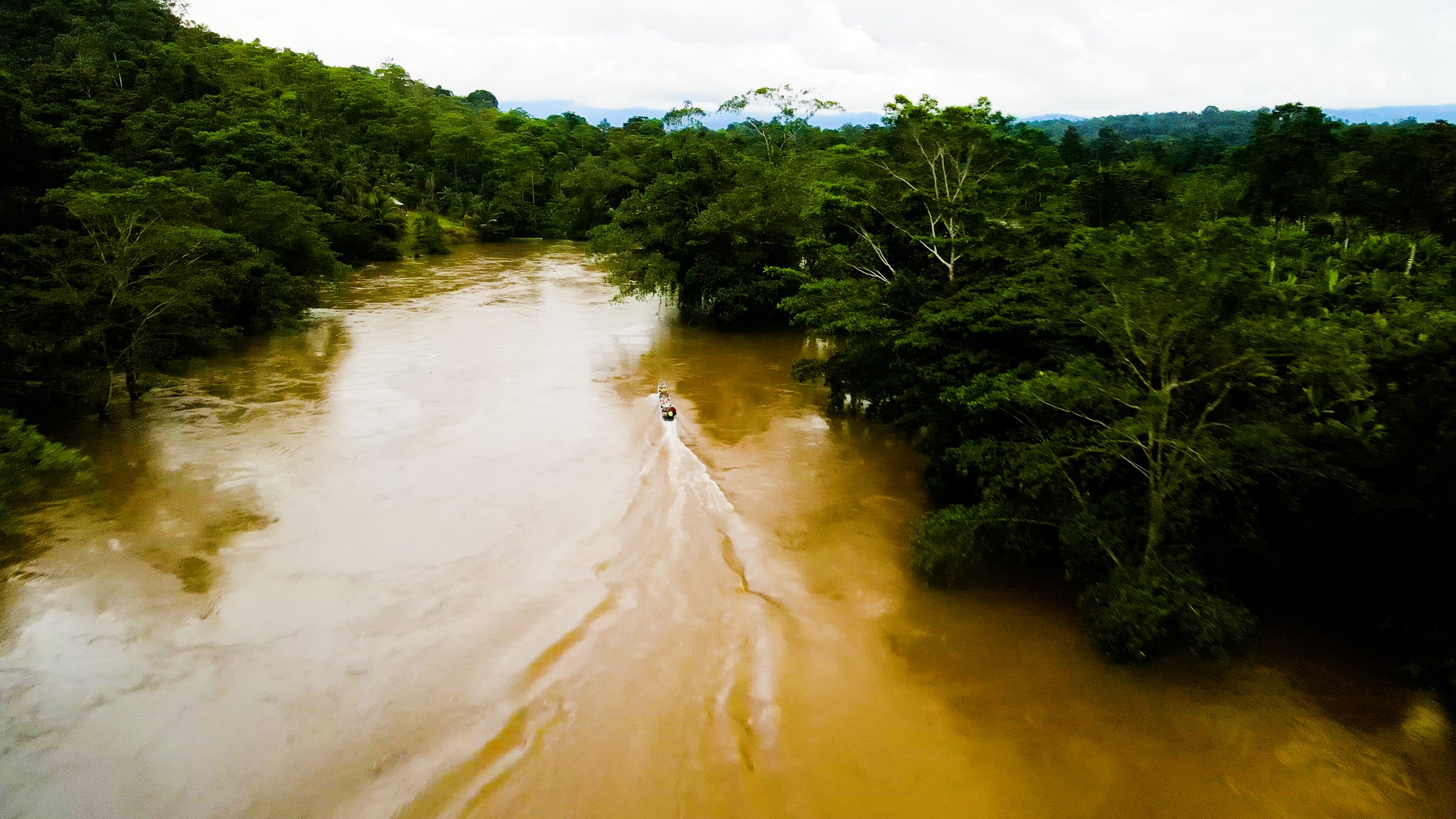
How far would you go for clean water?
Force of Water
A Human Portrait of Collective Action
In Force of Water, audiences are transported to two disparate corners of the globe — Ecuador and Uganda — where rural villages band together to solve their own local water crises.
Jump to:
Force of Water is unreleased.
Film Synopsis
Pichiyaku is a cluster of tin-roofed houses hugging the hillside above the Rio Cayapas in northern Ecuador. About one hundred indigenous families call this home. With no roads leading to the community, Pichiyaku is accessible only by motor canoe.
The river is the focal point of the community - it is the highway, the front yard, the laundromat, the bath, the dishwasher.
But there is danger in the water. 30km upriver, gold mines dump toxic waste into the current. Other villages contaminate it with untreated sewage.
Seven thousand miles east along the Equator lies Nyakabale, Uganda. Six thousand people live here, drawing water from four hand-pumped boreholes.
On a typical morning at the pump, a long line of yellow jerry cans stretches out on the red dirt, while women and girls wait an hour or more for their turn. Then they walk home, usually a kilometer or two. This task - walking, waiting, pumping, hauling - can occupy hours of each day.
The two locations face very different water challenges - contaminated abundance in Pichiyaku, overcrowded scarcity in Nyakabale. And they’ll require very different solutions to the problem.
But in both places, as The Water Trust’s Fiona Mary Aber points out, “it’s about the people.”
Through this one-hour documentary, viewers are immersed in the journey of two resilient communities as they embark on the monumental task of constructing their own water systems.
We meet Lorena, a fiery Pichiyaku resident who steps up to leadership during construction. We meet Joan and Charles, facilitators who negotiate with disgruntled neighbors over land and labor. We see the wisdom of experienced organizers and the energy of passionate volunteers.
Tensions mount. How will organizers confront reluctant neighbors who shirk communal work days? Can a management team enforce billing in the tight knit community? Will budget overruns derail their plans?
Through it all, the film poignantly captures the resilience, resourcefulness, and unwavering determination of those fighting for a fundamental human right.

Worldwide collaboration, local storytellers:
The Making of Force of Water
Background
Green Empowerment, a Portland-based nonprofit organization, provides last mile solar energy and clean water solutions. In early 2023, the organization received a generous grant from the Vatheuer Family Foundation to produce a documentary film.
Nathan.works stepped up to the task. I like to think we are uniquely qualified for this kind of work. Jay Austin and I have spent years creating documentary stories in challenging locations, including Ecuador and Uganda specifically, and we’re deeply familiar with the international nonprofit context.
Pre-production
We worked with Green Empowerment to determine the film's message and focus. We decided to focus the documentary on their water programs, as opposed to their solar energy initiatives (though solar panels do make an appearance).
In those early conversations, my co-producer Jay Austin and I emphasized the importance of developing a strong narrative with engaging characters and plot. We felt strongly that we needed to avoid making a “feature-length ad.” Producer Mica Miro, working on behalf of GE, shared this vision. She gets credit for holding our filmmaking vision (both in tension and in harmony) with the communications goals of the organization.
Jay led us through this process to produce a script that followed two distinct communities - one where the water model was well-established (in Ecuador’s Esmeraldas Province), and another where the program was new and untested (Masindi District, Uganda).
It was a bold choice. The actual obstacles the two projects would face, and even the ultimate success or failure of the projects, remained unknown.
In order to follow these projects over their duration, we planned for co-creation with other filmmakers based in each location: Martin Kingman in Ecuador, and Aleku Gilbert in Uganda.
Green Empowerment’s partners, Fundación ALTROPICO in Ecuador and The Water Trust in Uganda, also proved to be critical allies in pre-production. We held numerous calls with both teams. They shaped the story, they suggested plotlines, characters, and locations. I relied on them to connect our ideas to reality, and where necessary, to replace our ideas with reality.
With our story outlined and our team in place, we were ready to shoot.
Production
In April 2023, we started production. A total of seven shoots took place over the course of the year, 4 in Uganda and 3 in Ecuador.
The Nathan.works team traveled from the USA for three of these shoots, but for the others, we depended on the independent efforts of our local teams. This required us to be diligent in pre-production, producing detailed call sheets and interview questions for Martin and Gilbert to execute. And in many cases, they had to make quick decisions on the ground. They truly earned their Director of Photography credit, which they share with USA-based Esai Saenz.
Throughout production, we watched the story evolve. Some characters we thought would be central moved into the background; others rose up as leads. Halfway through the year, the Uganda project ran into a budget crisis, fully unforeseen by us, and Jay helped us re-write the script to feature this as a major plot element.
Post-production
Force of Water was, by far, the most ambitious editing project I’ve taken on. We had collected over 10,000 digital assets during production - hours of interviews and b-roll clips in 4 languages.
Jay began by re-writing our script into a post-production version, this time based on what we actually shot. I used this to create a list of 20 scenes, and I began to edit.
I used Adobe Premiere’s Teams function to split my efforts with my co-editor, Craig Richard. We began by creating 20 “assembly sequences.” I focused on selecting and arranging interview clips in line with our script. Craig added b-roll and sound. By splitting the timeline into separate sequences, we were able to work simultaneously, whether in person or remotely.
After our scenes were roughly assembled, we combined them into one timeline and began our finishing work. The key task here was music - an original score by Gonzalo Zubillaga. Beginning with our rough cut, Gonzalo composed original music to match the emotional and cultural notes of the film.
Graphics, color, audio mixing - a thousand tiny tasks make up the editing process.
But in the end, we did it.

Release and Reception
Force of Water premiered on April 13, 2024 to a sold-out crowd at the Clinton Street Theater in Portland, Oregon.
After over a year in the making, I was moved by the enthusiastic response to the film. Filmmaking is, fundamentally, a social act. There has to be a listener for the story. But a great deal of the work happens alone, especially the editing process. To watch it together, to see this story move people and hear their laughs, to talk afterwards about how they connected to our characters - for me, it completed the creative process.
The film is in Green Empowerment’s hands now. They are building a fundraising strategy around it and submitting it to film festivals. Jay has pushed for screenings in the communities where we filmed it, and in summer 2024 it will be shown in Nyakabale, Uganda.
Reflection
Force of Water challenged us in many ways. It’s the longest film, by runtime, that I’ve created. It was the most geographically distributed production I’ve managed. We tried out a lot of things for the first time. We filled our “Lessons Learned” document with little failures and big successes.
I’m proud of this film for a lot of reasons, but I’m especially proud of how collaborative this project was. I reached out for help when I needed it (that’s hard for me) and I received it, especially during the long lonely slog of post-production. Jay went harder on writing than I’ve ever seen, which meant I had a detailed, visionary guide during editing. Gonzalo created the score collaboratively, sometimes on a keyboard right in front of me, and I got to watch and even participate in that magical process. We gave power to Gilbert and Martin, and they delivered.
But when I think of Force of Water, the thing that fills me with most satisfaction is the story itself.
We set out to film a human story, and our cameras captured some remarkable humans. I am proud of how we portrayed Lorena in Ecuador and Joan in Uganda, and a dozen other people in each place.
I think we did a good job of showing their strength of character and their passion for making their world a better place. Lorena, Joan, Charles, Gustavo, Jamil, many more - they are inspiring to me.
I think filmmaking is how I follow their example, in my own way.
Credits
Directed by
Nathan Johnson
Written by
Jay W. Austin & Nathan Johnson
Produced by
Jay W. Austin & Mica Miro
Executive Producer
Stefan Vatheuer
Edited by
Nathan Johnson
Craig Richard
Joe Guilar
Directors of Photography
Aleku Gilbert
Martin Kingman
Esai Saenz
Still Photography
Jay W. Austin
Dennis Díaz
Allan Jageyambe Spence
Production Assistants
Dennis Díaz
Allan Jageyambe Spence
Second Unit - Pure Sky Media
Director of Photography - Emma Rose Browne
Sound mixed and mastered by
G. Thomas Craig
Color by
Craig Richard
Graphics created by
Design Camp
A. Heikal
Bill Bubenik, bigdirty.agency
Ci Black
Ionut S.
Music created by
Original score composed, produced, and performed by Gonzalo Zubillaga
Music mixing and mastering by Kairos Studio
Hospitality
Raul and the Caicedo Family, Telembi
San Miguel Negro Women’s Collective
Transportation
Tiba Ephraim
Raul Caicedo
Edison Calderón Armas
Audiovisual equipment provided by
Out The Trunk Films
Craig Richard Visuals
Carbon offset (8.88MT) provided by
Sustainable Travel International
Produced with the generous funding of
The Vatheuer Family Foundation
© 2024, Nathan.works LLC






